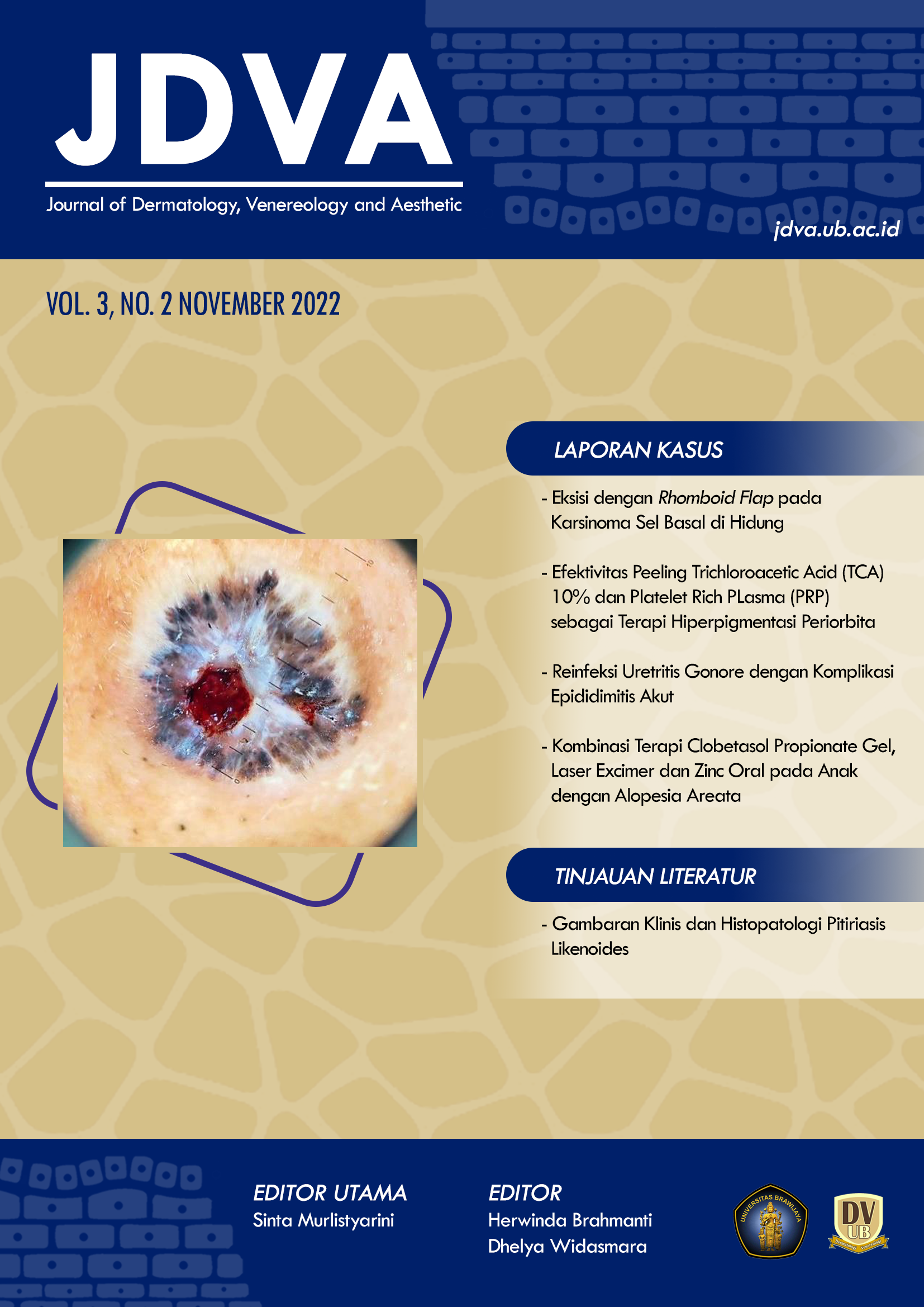BOTULINUM TOXIN A INJECTION AS FOREHEAD HYPERHYDROSIS THERAPY: A CASE REPORT
Abstract
Full Text:
PDFReferences
Brackenrich J, Fagg C. Hyperhidrosis. [Updated 2022 Oct 3]. In: StatPearls [Internet]. Treasure Island (FL): StatPearls Publishing; 2023 Jan-. Available from:https://www.ncbi.nlm.nih.gov/books/NBK4
/
Nawrocki S, Cha J. The etiology, diagnosis, and management of
hyperhidrosis: A comprehensive review. J Am Acad Dermatol. 2019 Sep;81(3):657–66.
Campanati A, Martina E, Gregoriou S, Kontochristopoulos G, Paolinelli M, Diotallevi F, et al. Botulinum Toxin Type A for Treatment of Forehead Hyperhidrosis: Multicenter Clinical Experience and Review from Literature. Toxins (Basel). 2022 May 27;14(6):372.
Benson RA, Palin R, Holt PJE, Loftus IM. Diagnosis and management of hyperhidrosis. BMJ. 25 November 2013;347:f6800.
Hosp C, Naumann MK, Hamm H. Botulinum Toxin Treatment of Autonomic Disorders: Focal Hyperhidrosis and Sialorrhea. Semin Neurol. Februari 2016;36(1):20–8.
Wolosker N, Faustino CB, Silva MFA da, Campos JRM de, Kauffman P. Current treatment options for craniofacial
hyperhidrosis. J Vasc Bras. 2020;19.
Estevan FA, Wolosker MB, Wolosker N, Puech-Leão P. Epidemiologic analysis of prevalence of the hyperhidrosis. An Bras
Dermatol. 2017 Oct;92(5):630–4.
Haider A. Focal hyperhidrosis: diagnosis and management. Can Med Assoc J [Internet]. 2005 Jan 4;172(1):69–75. Available from:
http://www.cmaj.ca/cgi/doi/10.1503/cmaj.1040708
Romero FR, Haddad GR, Miot HA, Cataneo DC. Palmar hyperhidrosis: clinical, pathophysiological, diagnostic and
therapeutic aspects. An Bras Dermatol. 2016;91(6):716–25.
McConaghy JR, Fosselman D. Hyperhidrosis: Management options. Am Fam Physician. 2018;97(11):729–34.
Atkins JL, Butler PEM. Hyperhidrosis: a review of current management. Plast Reconstr Surg. Juli 2002;110(1):222–8.
Garcia-Souto F, del Boz J, ColmeneroSendra M, Polo-Padillo J. Craniofacial hyperhidrosis: Clinical characteristics and response to treatment in a cohort of 97 patients treated with oral oxybutynin.
Dermatol Ther. 2021;34(1):0–3.
Field M, Splevins A, Picaut P, van der Schans M, Langenberg J, Noort D, et al. AbobotulinumtoxinA (Dysport®), OnabotulinumtoxinA (Botox®), and IncobotulinumtoxinA (Xeomin®) Neurotoxin Content and Potential Implications for Duration of Response in Patients. Toxins (Basel). 2018 Dec 13;10(12):535.
Sammons JE, Khachemoune A. Axillary hyperhidrosis: a focused review. J Dermatolog Treat. 2017 Oct 3;28(7):582–90.
Doft MA, Hardy KL, Ascherman JA. Treatment of Hyperhidrosis With Botulinum Toxin. Aesthetic Surg J. 2012 Feb 1;32(2):238–44.
Refbacks
- There are currently no refbacks.

This work is licensed under a Creative Commons Attribution-ShareAlike 4.0 International License.

